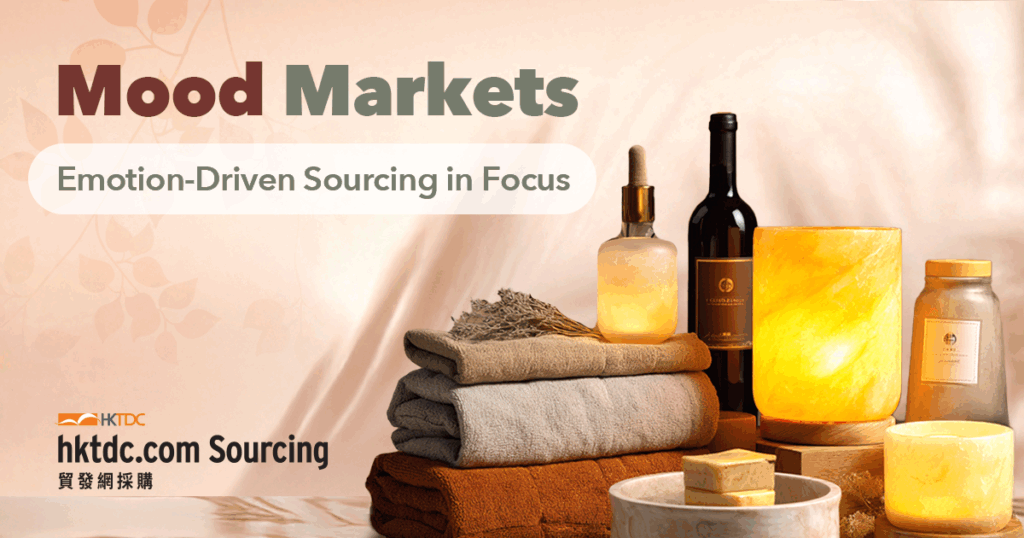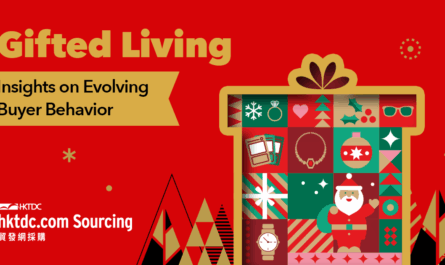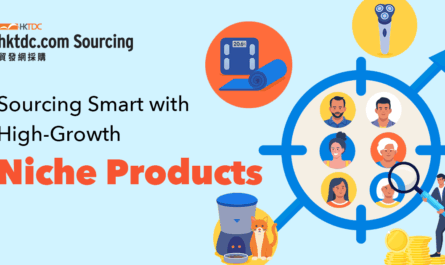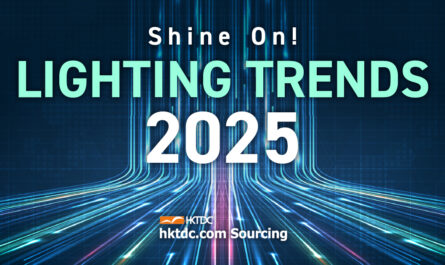Why Are Emotions Shaping Consumer Behavior in 2025?
In 2025, consumers are no longer just buying products—they’re buying emotional outcomes. Whether it’s calm, joy, focus, or comfort, emotional states are now central to how people shop, especially in lifestyle categories. McKinsey’s Future of Wellness 2025 survey highlights that wellness has become a top priority for U.S. consumers, especially among younger generations who embrace it as a daily, personalized practice. NielsenIQ adds that 65% of female consumers now actively seek products to support their mental wellbeing—a 33% increase since 2022—highlighting the growing demand for emotionally resonant offerings across demographics.
This shift is rooted in a post-pandemic world where uncertainty, digital fatigue, and rising mental health awareness have reshaped consumer values. Innova Market Insights reports that mental wellbeing has become a key purchase driver across lifestyle categories, with consumers increasingly seeking products that deliver comfort, relaxation, and emotional uplift. This growing emphasis on feelings-driven fulfillment is influencing everything from wellness sourcing to homeware and food and beverage categories, as buyers look beyond utility to mood-enhancing value.
What Are the Facts Behind Emotional Buying?
Emotional Drivers and Consumer Behavior
Emotional buying has shifted from anecdote to analytics—now backed by measurable consumer insights. Mindforce Research finds that 70% of consumers say emotional triggers influence their purchase decisions, while Innova Market Insights reports that 68% of global consumers prioritize managing their emotional wellbeing and lifestyle independently. NielsenIQ’s 2025 Consumer Outlook highlights a growing shift toward mood-based shopping, with consumers increasingly selecting products that support emotional states such as calm, happiness, and energy—especially in wellness, home, and personal care categories.
Market Impact and Strategic Advantage
The emotional economy is expanding rapidly. Euromonitor projects the global market for mood-enhancing products—like wellness accessories, comfort snacks, and ambient lighting—to grow at 12.3% CAGR through 2028. Emotional resonance is no longer a soft metric; it’s a strategic advantage. Products that reflect emotional intent are outperforming neutral ones by up to 30% in repeat purchase rates, reshaping how brands connect with consumers.
Where Is Emotion Driving the Strongest Product Demand?
Across categories, emotion is influencing product development, merchandising, and sourcing strategy. The following three areas—sensory design, food and beverage, and home environments—are leading the charge.
Sensory Design: How Products Look, Feel, and Smell
Consumers are increasingly drawn to products that engage the senses—visually, tactilely, and aromatically—because these cues directly influence mood, memory, and emotional response.
- Color as Emotional Language is reshaping product design in 2025. Instead of focusing on specific shades, consumers respond to emotionally charged palettes that promote calm, clarity, or energy. From soothing neutrals to expressive brights, color is being used as a tool to personalize space and influence mood. Searches for “cozy home accessories” and “color therapy décor” are up 28% year-on-year, signaling a growing interest in emotion-focused design.
- Texture as Comfort Texture plays a vital role in emotional engagement. Plush, velvety, and matte finishes convey warmth and care, while natural materials like wood, linen, and ceramic add emotional depth. A 2025 consumer study found that 72% of shoppers say packaging texture influences their perception of product quality, with soft-touch materials—often used in bedding and loungewear—driving emotional comfort and perceived value.
- Scent as Emotional Memory Scent is directly linked to the limbic brain—the center of emotion and memory. Aromatherapy products like candles, diffusers, and essential oils have entered the mainstream. The global aromatherapy market is projected to reach $3.8 billion by 2026; nearly half of consumers (48%) say scent shapes how they perceive product quality and emotional value.
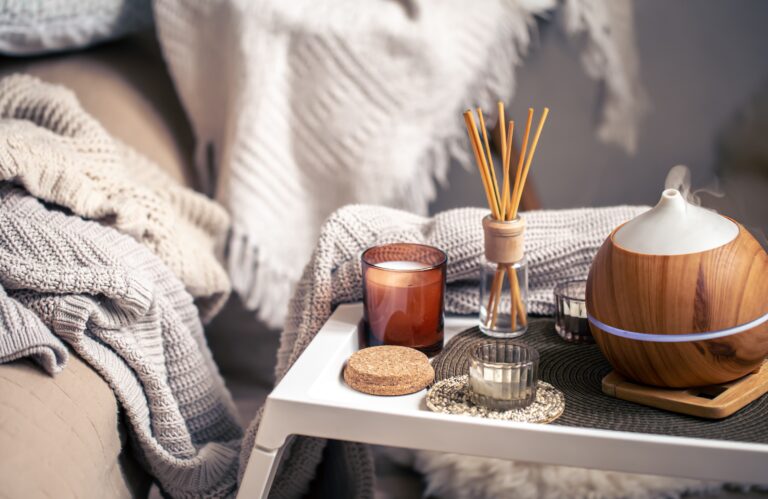
Sourcing Tips for Sensory Products
Buyers should look for:
- Aromatherapy items like scented candles, diffusers, body lotions, and massage body oils with calming ingredients like lavender, chamomile, or sandalwood. Packaging often highlights emotional benefits using terms like “calm,” “relax,” “stress relief,” or “soothe.”
- Bath accessories with plush textures and ergonomic designs—think spa-style towel sets and neutral-tone bath trays, bath mat, body brushes, and scent-infused soaps etc. Products that emphasize softness and skin-friendly materials are especially appealing.
- Textile comfort items, such as breathable sheets, soft comforters, and silk or cotton loungewear, are gaining popularity among consumers. To stand out in this category, prioritize soft-touch packaging and sleep-enhancing claims. Look for product highlights such as “better sleep,” “gentle on skin,” “relaxation wear,” or “nighttime comfort.”
Explore soft-touch textiles and loungewear designed to nurture rest, comfort, and nighttime rituals.
Together, these products reflect a broader shift toward sensory-based self-care. According to HHProcessors’ 2025 report, 67% of consumers now incorporate daily rituals for mental clarity and relaxation—often through the use of scented and tactile comfort products.
Food & Beverage: From Nourishment to Ritual
Food and beverage choices are increasingly tied to mood-based rituals—daily moments that help consumers unwind, focus, celebrate, or reconnect. In 2025, this category has evolved from basic nourishment to holistic self-care, with consumers choosing products for their ability to comfort, recharge, and create moments of balance.
- Calming Drinks
Once centered around herbal infusions, the drinks category has expanded into fruit-flavored wellness beverages and functional drinks that support stress relief, better sleep, and mental clarity.
- Mindful Snacks
Snacking is evolving into a mindful form of emotional self-care. Consumers are reaching for options that soothe without guilt— such as nutrient-rich comfort snacks with indulgent flavors and wholesome ingredients. According to Mintel’s Global Snacking Trends 2025 report, 63% of consumers snack to improve their mood, placing personal satisfaction above convenience or hunger.
- Wellness Wines
Wine now fulfills more than a celebratory role—it complements the emotional side of dining. Red wine remains the world’s most consumed type, valued for its rich flavor and mellow tannins that promote after-work relaxation. Champagne and sparkling wines are gaining share beyond special occasions, appreciated for their feel-good sparkle. According to International Wines and Spirits Record (IWSR), three in ten sparkling-wine drinkers now enjoy these beverages casually at home. Low- and alcohol-free varieties continue to surge, driven by younger consumers seeking balance. The global non-alcoholic wine market is forecast to grow at a 23.5% CAGR through 2034, with sparkling styles leading urban sales and expanding the appeal of mindful drinking.

Sourcing Tips for Food & Beverage
Buyers should look for:
- Herbal teas and functional drinks with ingredients like chamomile, ginger, and ginseng. Packaging often highlights emotional benefits using terms like “relax,” “calming,” “stress relief,” “energy boost,” or “sleep support.” These cues make them ideal for mood-based merchandising.
- Wines with descriptors like “light-bodied,” “balanced,” or “refreshing” are increasingly favored for casual, mood-based consumption. Sparkling varieties—especially those with wellness cues or lighter formats—are gaining traction among Gen Z and millennials, who seek more mindful drinking experiences.
- Snacks that blend comfort and nutrition—such as dark chocolate with fruit infusions, nut clusters with natural sweeteners, or oat bites paired with warm spices. Look for packaging that highlights mood benefits and nostalgic flavors.
Browse mood-friendly snacks—from indulgent bites to nostalgic blends that support mindful moments.
Today’s food and beverage choices reflect a growing desire for comfort, balance, and intentional living. According to Mintel’s 2025 trends report, consumers are drawn to products that offer calm, clarity, or a sense of control in their daily lives.
Home & Lighting: Designing for Emotional Impact
In 2025, the home has become more than a place to live—it’s a space for restoration and spiritual connection. Consumers are designing their environments to enhance inner calm and clarity. This shift is part of a broader movement toward “emotional architecture,” where every element of the home contributes to how people feel.
- Home Decor
Increasingly, home décor is being embraced as a tool for personal renewal. McKinsey reports that 58% of consumers made changes to their homes to feel more relaxed, favoring design choices that foster warmth, vitality, and self-expression. From layered textures to curated vignettes, interiors are shifting toward more intuitive, mood-responsive styling.
- Lighting Solutions
Lighting is now a key tool to nurture emotional balance. Adjustable LEDs, mood lamps, and color-changing bulbs help consumers shift their space from energizing brightness to soothing warmth. According to MarketsandMarkets, the smart lighting market is projected to grow from $9.86 billion in 2025 to $17.38 billion by 2030, at a CAGR of 12.0%. What’s more, a 2025 IKEA survey found that 63% of consumers believe lighting directly affects their mental state.
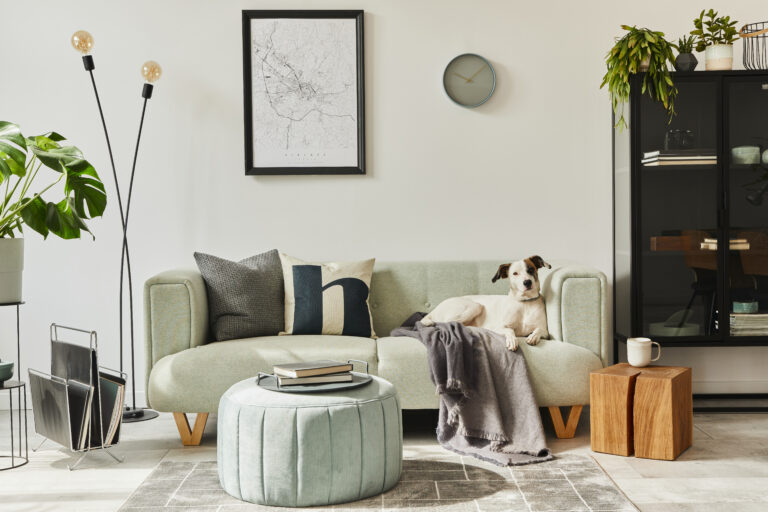
Sourcing Tips for Home & Lighting
Buyers should look for:
- Home décor that tells a story—look for abstract art, sculptural pieces, and handcrafted wall accents that evoke emotion and individuality. Prioritize color palettes that promote warmth and calm, such as earth tones and muted neutrals. For personality-driven spaces, bold pieces in vibrant hues like bright blue, sunny yellow, or coral red can add energy and visual impact. Buyers should also consider mixed materials—ceramic, wood, metal, and textile blends—that offer tactile richness and design depth.
- Lighting solutions that support mood and function—adjustable brightness and color temperature help shift spaces from energizing to restorative. Smart features like app control and preset modes such as “focus,” “cozy,” and “relax” are in demand, offering intuitive ways to match lighting with daily routines. Products with voice activation or scheduling add flexibility and ease to modern living.
Source mood-enhancing lighting that transforms everyday spaces into emotional sanctuaries.
How Should Sourcing Professionals Respond?
The mood market isn’t a trend—it’s a transformation. As emotional resonance becomes a key driver of consumer behavior, sourcing professionals must evolve their approach. Today’s buyers prioritize products that reflect how people want to feel—not just what they need to do. This means curating with empathy, selecting items that support feel-good rituals, and merchandising with sensory storytelling.
Emotion as a Strategic Lens
In 2025, emotion is no longer a soft factor—it’s a strategic lens for sourcing, branding, and product development. Consumers are shaping their lives around how they want to feel, and the most successful products are those that meet them there.
Ready to turn emotional insights into sourcing action? Discover mood-enhancing products and lifestyle essentials on hktdc.com Sourcing—where emotion meets innovation.
Bonus for Suppliers
Products that support emotional wellbeing—through comfort, mood, or personal rituals—are gaining traction across sourcing platforms. If your brand delivers sensory value through design or experience, now is the time to stand out. Join hktdc.com Sourcing to connect with buyers seeking lifestyle-driven, feel-good essentials.
Consumer Psychology & Market Trends McKinsey, NielsenIQ, Euromonitor, Innova Market Insights, HHProcessors, Mindforce Research, IWSR, Exploding Topics, IKEA, MarketsandMarkets, HKTDC Buyer Sourcing Behaviour Survey 2025
Lifestyle & Home Design Pantone, Pinterest Home Trends 2025, McKinsey Home as a Wellness Hub, Statista, Grand View Research, IMARC
Brand Storytelling & Engagement Forrester, LinkedIn B2B Institute, Geni$rive, DigitalStoryteller.io, Flow.ninja, Licera Inc., Bluemeteor, HKTDC NewsBites
Sourcing Platform & Buyer Guidance hktdc.com Sourcing, HKTDC Support Centre, HKTDC NewsBites
Search Trends & Analytics Google Trends, Google Ads Keyword Planner, Exploding Topics, GWI, AgencyJet



